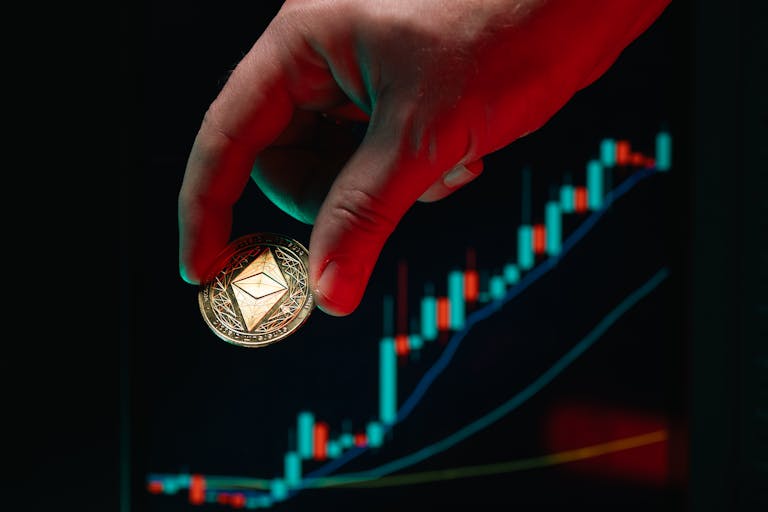Mastering Binance Chart Reading: A Trader’s Guide to Navigating the Markets
In the fast-paced world of cryptocurrency trading, the ability to read and interpret price charts is a critical skill. Binance, one of the largest cryptocurrency exchanges, offers robust charting tools that enable traders to analyze market trends, identify opportunities, and make informed decisions. Whether you’re a novice or an experienced trader, understanding how to read Binance charts can significantly enhance your trading strategy. This guide will walk you through the essentials of chart reading on Binance, from basic elements to advanced techniques.
Understanding Binance Charts
Binance’s platform provides three primary types of charts: line charts, bar charts, and candlestick charts. Each has its own advantages, but candlestick charts are the most popular among traders due to their detailed representation of price movements.
1. Candlestick Charts
Candlestick charts display four key price points for each timeframe: open, high, low, and close. The body of the candle represents the range between the open and close prices, while the "wicks" (or shadows) show the high and low for the period.
- Bullish candles (green or white) indicate that the closing price was higher than the opening price.
- Bearish candles (red or black) show the opposite.
2. Bar Charts
Bar charts use vertical bars to represent price data. While less intuitive than candlesticks, they are still useful for analyzing trends and volume.
3. Line Charts
These charts connect closing prices with a single line, offering a simplified view of price trends over time.
Timeframe Selection: Binance allows traders to view charts in various timeframes, from 1-minute intervals to monthly data. Shorter timeframes (like 15-minute or 1-hour charts) are ideal for day trading, while longer ones (daily or weekly) suit swing or long-term strategies.
Key Elements to Analyze on Binance Charts
Support and Resistance Levels
- Support is a price level where demand is strong enough to prevent further declines.
- Resistance is a level where selling pressure halts upward movement.
Traders use these to predict potential entry/exit points. For example, if a cryptocurrency repeatedly bounces off a support level, it may signal a buying opportunity.
Trendlines
Trendlines help identify the direction of a price movement:
- Uptrend: A series of higher highs and higher lows.
- Downtrend: A series of lower highs and lower lows.
- Sideways trend: Prices oscillate within a range.
Drawing trendlines on Binance’s charting tools can reveal potential breakouts or reversals.
Volume
Volume indicates the strength of a price move. High volume during a price increase suggests strong bullish momentum, while low volume may signal a weak trend. Binance’s volume indicators (like the volume histogram) help traders validate chart patterns.
Common Chart Patterns to Watch For
Identifying recurring patterns can provide clues about future price action:
1. Head and Shoulders
This pattern (inverted or regular) signals a potential reversal. It consists of three peaks: a higher peak (head) with two smaller ones (shoulders) on either side. A breakdown below the "neckline" often confirms a bearish trend.
2. Triangles
- Ascending/Descending Triangles suggest continuation or reversal.
- Symmetrical Triangles indicate a pause in the trend, with the price breaking out in the direction of the existing trend.
3. Flags and Pennants
These are short-term consolidation patterns that follow a sharp price movement. A "flag" appears as a rectangle, while a "pennant" is a small triangle. A breakout from these patterns often continues the original trend.
4. Double Tops and Bottoms
A double top forms when the price reaches a resistance level twice and fails to break through, signaling a potential reversal. Conversely, a double bottom occurs when the price hits a support level twice, suggesting a bullish reversal.
Technical Indicators for Binance Traders
Indicators are mathematical calculations that help analyze price data. Here are some essential ones for Binance:
1. Moving Averages (MA)
- Simple Moving Average (SMA) and Exponential Moving Average (EMA) smooth out price data to identify trends.
- Crossovers (e.g., the "golden cross" when a short-term MA crosses above a long-term MA) can signal buy opportunities.
2. Relative Strength Index (RSI)
RSI measures the speed and change of price movements, indicating overbought (above 70) or oversold (below 30) conditions. Traders use it to spot potential reversals.
3. Moving Average Convergence Divergence (MACD)
The MACD line and signal line help detect momentum shifts. A cross above the signal line suggests bullish momentum, while a cross below indicates bearish pressure.
4. Bollinger Bands
These bands (two standard deviations from the MA) show volatility. A narrowing band suggests low volatility, while a widening band indicates a potential breakout.
Note: Binance allows users to customize indicators via its TradingView integration, which offers thousands of tools and overlays.
Practical Tips for Binance Traders
1. Customize Your Charts
Use Binance’s chart settings to add indicators, adjust timeframes, and highlight key levels. For example, overlay RSI and MACD on a candlestick chart for a comprehensive view.
2. Analyze Multiple Timeframes
Check longer timeframes (e.g., daily or weekly) to identify the overall trend, then use shorter intervals (like 1-hour or 15-minute) for precise entry/exit points.
3. Combine Indicators
No single indicator is foolproof. Use multiple tools to confirm signals. For instance, a bullish RSI (above 30) combined with a positive MACD crossover can strengthen a buy case.
4. Use Binance’s Advanced Tools
Binance’s TradingView platform includes drawing tools (e.g., Fibonacci retracements, Pivots) and customizable alerts. Familiarize yourself with these to refine your analysis.
5. Practice and Backtest
Use demo accounts or paper trading to test your strategies. Binance’s spot and futures markets are great for experimenting without real financial risk.
The Importance of Context and Risk Management
Chart reading is not a crystal ball. It’s a tool to inform decisions, not dictate them. Consider the broader market context, such as news events, regulatory changes, or macroeconomic factors, which can impact prices. Always pair chart analysis with risk management techniques like stop-loss orders and position sizing.
Conclusion
Mastering Binance chart reading is a journey that requires practice, patience, and continuous learning. By understanding candlestick patterns, technical indicators, and key price levels, traders can better anticipate market movements and improve their strategies. Remember, charts are just one piece of the puzzle—always conduct thorough research and stay disciplined. With the right approach, Binance’s charting tools can become an invaluable asset in your trading toolkit.
Start small, experiment with different methods, and gradually build confidence. The crypto markets are volatile, but with strong charting skills, you’ll be better equipped to navigate their complexities.
Happy trading! 📈🔥







